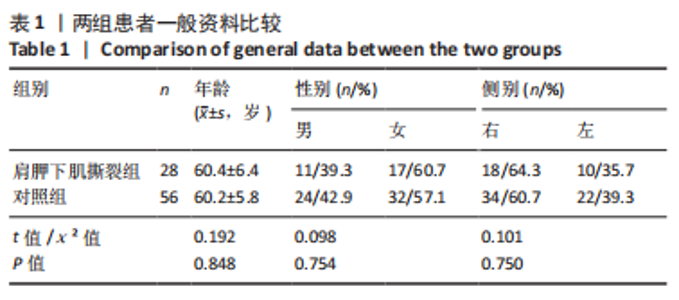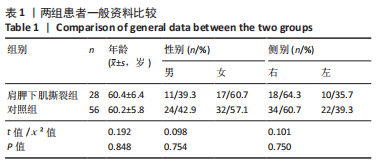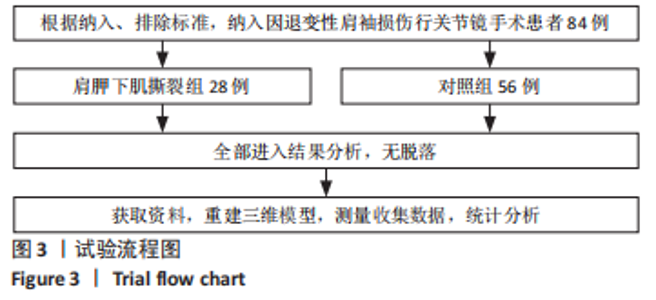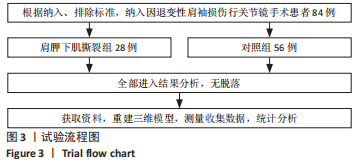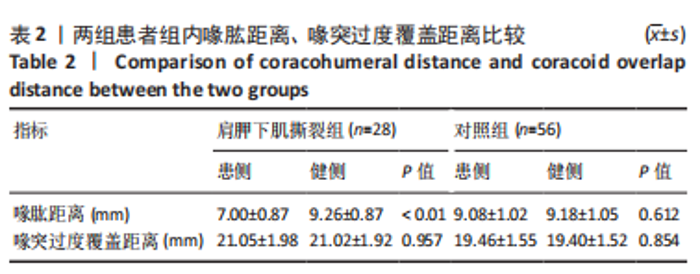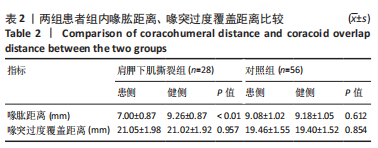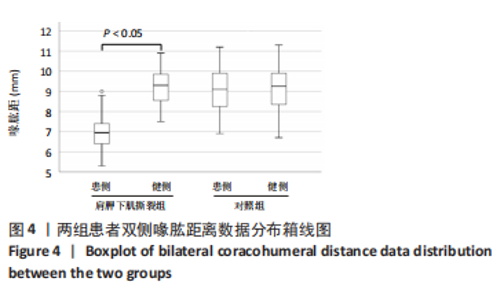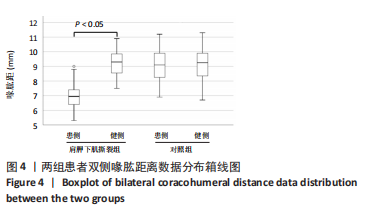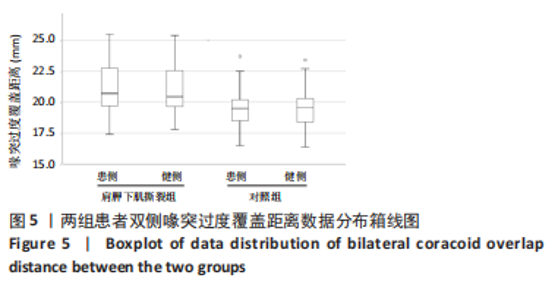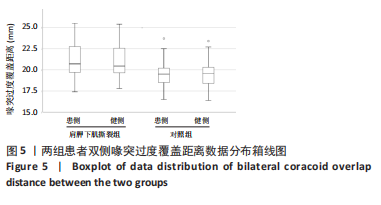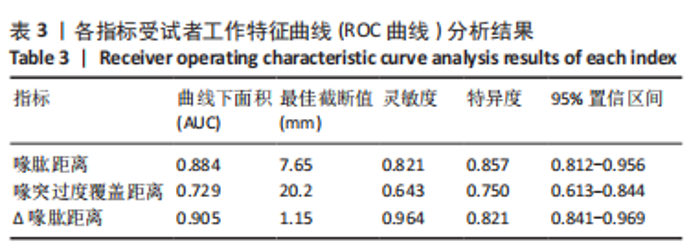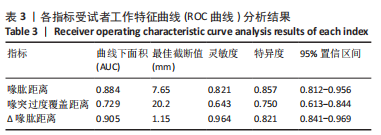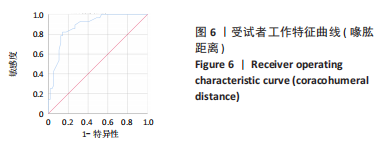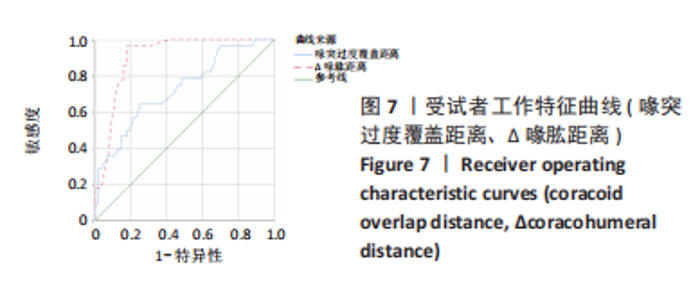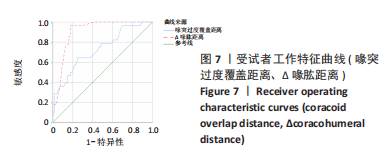[1] LEITE MJ, PINHO AR, SÁ MC, et al. Coracoid morphology and humeral version as risk factors for subscapularis tears. J Shoulder Elbow Surg. 2020;29(9):1804-1810.
[2] 柳在澈.肩胛下肌腱撕裂的分型和治疗[J].中华肩肘外科电子杂志,2016,4(4):255.
[3] KIM TK, RAUH PB, MCFARLAND EG. Partial tears of the subscapularis tendon found during arthroscopic procedures on the shoulder: a statistical analysis of sixty cases. Am J Sports Med. 2003;31(5):744-750.
[4] LAFOSSE L, JOST B, REILAND Y, et al. Structural integrity and clinical outcomes after arthroscopic repair of isolated subscapularis tears. J Bone Joint Surg Am. 2007;89(6):1184-1193.
[5] XIN L, LUO J, CHEN M, et al. Anatomy and Correlation of the Coracoid Process and Coracoclavicular Ligament Based on Three-Dimensional Computed Tomography Reconstruction and Magnetic Resonance Imaging. Med Sci Monit. 2021;27:e930435.
[6] 凌一鸣,张开伟,沈冯君.喙突形态改变对肩胛下肌腱的损害分析[J].实用骨科杂志,2018,24(11):995-997,1001.
[7] ZHU S, TAN J, WU D, et al. Bilateral coracohumeral distance discrepancy is associated with subscapularis tear in rotator cuff rupture patients. Knee Surg Sports Traumatol Arthrosc. 2021;29(12):3936-3942.
[8] AKTAS E, SAHIN B, ARIKAN M, et al. MRI analysis of coracohumeral interval width and its relation to rotator cuff tear. Eur J Orthop Surg Traumatol. 2015;25(2):281-286.
[9] BALKE M, BANERJEE M, GRESHAKE O, et al. The Coracohumeral Distance in Shoulders With Traumatic and Degenerative Subscapularis Tendon Tears. Am J Sports Med. 2016;44(1):198-201.
[10] LO IK, BURKHART SS. The etiology and assessment of subscapularis tendon tears: a case for subcoracoid impingement, the roller-wringer effect, and TUFF lesions of the subscapularis. Arthroscopy. 2003;19(10):1142-1150.
[11] 霍彦旭,杨志,裴方,等.临界肩关节角与退行性肩袖撕裂关系的临床研究[J].中国组织工程研究,2020,24(35):5644-5649.
[12] XU W, WANG F, XUE Q. Identifying key factors associated with subscapularis tendon tears and developing a risk prediction model to assist diagnosis. BMC Musculoskelet Disord. 2022;23(1):393.
[13] 马秉贤,张永,包呼日查,等.基于CT三维模型分析肩胛下肌腱损伤患者喙突形态和位置的研究[J].中华肩肘外科电子杂志,2021, 9(3):229-235.
[14] HATTA T, YAMAMOTO N, SANO H, et al. Three-Dimensional Morphometric Analysis of the Coracohumeral Distance Using Magnetic Resonance Imaging. Orthop Rev(Pavia). 2017;9(1):6999.
[15] IMMA II, NIZLAN NM, EZAMIN AR, et al. Coracoid Process Morphology using 3D-CT Imaging in a Malaysian Population. Malays Orthop J. 2017; 11(2):30-35.
[16] 杨士豪,赵甲军,郑稼,等.肩胛骨个体解剖形态测量对肩袖损伤诊断的预测价值[J].中华实用诊断与治疗杂志,2021,35(6):596-598.
[17] FRIEDMAN RJ, HAWTHORNE KB, GENEZ BM. The use of computerized tomography in the measurement of glenoid version. J Bone Joint Surg Am. 1992;74(7):1032-1037.
[18] GIAROLI EL, MAJOR NM, LEMLEY DE, et al. Coracohumeral interval imaging in subcoracoid impingement syndrome on MRI. AJR Am J Roentgenol. 2006;186(1):242-246.
[19] LEITE MJ, SÁ MC, LOPES MJ, et al. Coracohumeral distance and coracoid overlap as predictors of subscapularis and long head of the biceps injuries. J Shoulder Elbow Surg. 2019;28(9):1723-1727.
[20] KLEIST KD, FREEHILL MQ, HAMILTON L, et al. Computed tomography analysis of the coracoid process and anatomic structures of the shoulder after arthroscopic coracoid decompression: a cadaveric study. J Shoulder Elbow Surg. 2007;16(2):245-250.
[21] 胡健,禹宝庆,刘丙立.喙突的形态变异与相关疾病[J].中国临床解剖学杂志,2021,39(4):496-500.
[22] CETINKAYA M, ATAOGLU MB, OZER M, et al. Subscapularis Tendon Slip Number and Coracoid Overlap Are More Related Parameters for Subcoracoid Impingement in Subscapularis Tears: A Magnetic Resonance Imaging Comparison Study. Arthroscopy. 2017;33(4): 734-742.
[23] DINES DM, WARREN RF, INGLIS AE, et al. The coracoid impingement syndrome. J Bone Joint Surg Br. 1990;72(2):314.
[24] DE WILDE LF, VERSTRAETEN T, SPEECKAERT W, et al. Reliability ofthe glenoidplane. J Shoulder Elbow Surg. 2010;19(3):414-422.
[25] CABEZAS AF, KREBES K, HUSSEY MM, et al. Morphologic Variability of the Shoulder between the Populations of North American and East Asian. Clin Orthop Surg. 2016;8(3):280-287.
[26] VAN PARYS M, ALKIAR O, NAIDOO N, et al. Three-dimensional evaluation of scapular morphology in primary glenohumeral arthritis, rotator cuff arthropathy, and asymptomatic shoulders. J Shoulder Elbow Surg. 2021;30(8):1803-1810.
[27] AHMAD ZY, DIAZ LE, ROEMER FW, et al. Imaging Review of Subscapularis Tendon and Rotator Interval Pathology. Radiol Res Pract. 2022;2022:4009829. |
